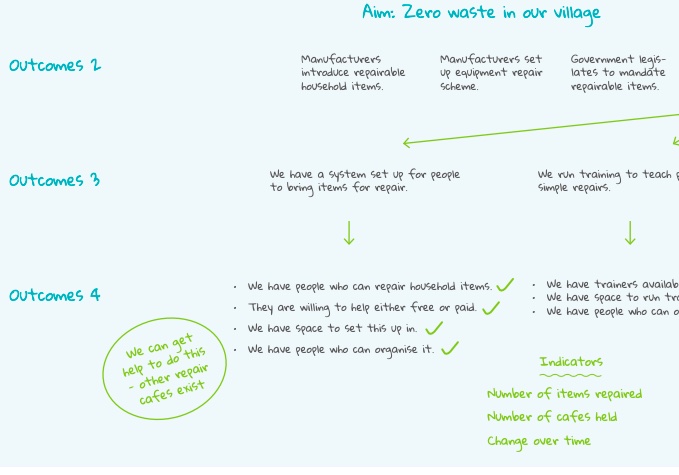I’ve worked in water and environment for a dozen years. I wanted to change something. An idealistic person, my enthusiasm has been ground down by not seeing the impact I imagined. Climate change remains an elusive problem for me to influence. This is a reflection on my personal theory of change and impact, and whether something keeps going wrong.
I took a great class about women’s leadership in climate change. Created by C40 Cities Women4Climate, it was created with support of the Fondation L’Oréal. One part of the class asked students to identify a THEORY OF CHANGE before they embarked on solutions. Steps included:
- Identify the root cause
- Need
- Outcome
- Assumptions

ROOT CAUSE: Climate change makes people and places vulnerable
Climate change was introduced to me in high school. I wrote a report on air pollution and the hole in the atmosphere. I believed in governance as the solution. I thought about injustice for animals before I thought about it for people. When I thought about giant droughts of the future, I figured humans would move water from water rich places to water poor places. I wondered what right we had to do this. I passionately felt the great blue heron owned the water as well.
I pursued an interest in nature and climate change in school. How was nature changing the places in my home region? I focused on water because my grandparents lived by a river, and it was as good as anything else. In my theory of change, if I could understand how nature was changing places, I could understand how to protect people.
NEED: Our water systems should be stronger
I found work on a drinking water system I thought was vulnerable to climate change. The place seemed vulnerable to climate change because the community took water from a forested area. The community was developing in a way that meant it needed more water. They had drinking water reservoirs up in the forest. There were opportunities to work with timber companies to protect the water supply, and to work with agriculture to make the system less vulnerable to heat and fertilizers.
As I got involved, the community leaders were planning for long term water supply, and they were going to find a new source. Population growth and economic growth were the reason for action. Climate change did affect the water from the forest, but it was reduced to the problem that there wasn’t enough water. Their forested watershed was not reliable in part from drought and rising temperatures. A redundant water supply would solve the problem.
OUTCOME: A resilient water system is created
The community leaders built an expensive pipe to bring in more water. The case was closed. They did continue to protect their forested watershed. The new supply meant that climate resilience was built into the water system. But for me, there was little satisfaction in being a part of it.
ASSUMPTION: Climate change is the driving vulnerability
What assumptions had I made? At the start I did not have a sense for the flavor of climate results that I was seeking. I assumed that a climate resilient drinking water system was enough. It was looking at the social landscape that made me doubtful about my impact. In the community water planning, I saw that business people had loud voices. New housing construction and manufacturing were influential to long term decisions. Big business built housing and water was required. Manufacturing relied on clean water. I saw a letter that said the community couldn’t add affordable housing because they hadn’t planned for that use in their water supply planning. This climate resilient water system would support growth for more wealthy folks than lower income folks.
I could see how expensive projects can build a resilient future for the wealthy. If I look at my initial root problem definition, I find that it’s true climate change makes people vulnerable. It is more true that climate change exacerbates inequalities. Now in our socially aware world this seems obvious, but the way that climate and society meet is far from being clear in my mind.